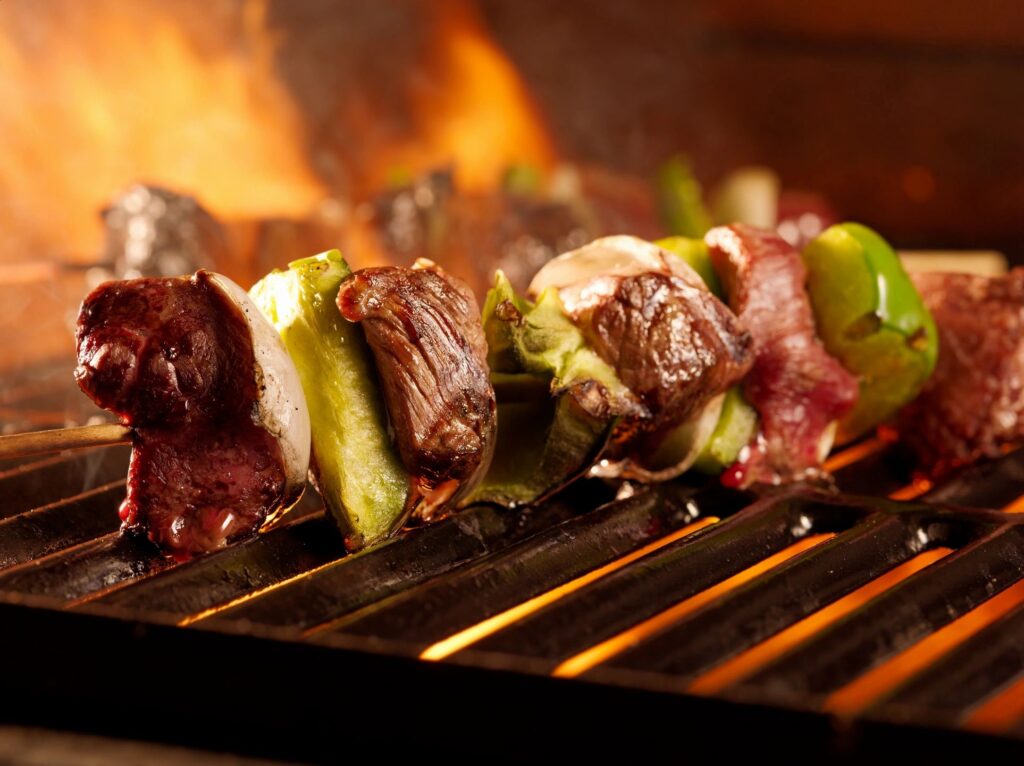
Chow Line: Meat thermometer is the best option to ensure food safety when grilling meat
By Tracy Turner
Why should I use a meat thermometer while barbecuing steak on the grill? Can’t you just look at the steak to determine if it’s done by the color of the meat?
Although many people use color as an indicator of doneness when grilling meats, to lessen your chance of developing a foodborne illness, it’s best to use a meat thermometer to ensure that your meat is cooked to the correct internal temperature.
Your question is very timely, considering that July is National Grilling Month, with July 4th generally accepted as the most popular U.S. holiday for grilling, surveys have shown. And because your question is very similar to one that was asked in a previous “Chow Line” column, it’s best answered by reissuing that column here.
According to research by the U.S. Department of Agriculture and the Food and Drug Administration, only 34% of the public uses a food thermometer when cooking hamburgers.
But, in order to avoid foodborne illness, the USDA advises consumers to use a food thermometer to accurately measure if meat is cooked to a high enough internal temperature to destroy any harmful bacteria such as salmonella and E. coli that might be present.
The safe minimum cooking temperature for ground meats, including beef, pork, veal, and lamb, is 160 degrees Fahrenheit. Turkey and chicken should be cooked to an internal temperature of 165 degrees, according to the USDA. Steak and pork can be safely cooked to 145 degrees.
To gauge the most accurate temperature, place the meat thermometer in the thickest part of the food.
In addition, the USDA says that you should allow a three-minute rest time after removing the meat from the heat source. During this rest time, the temperature of the meat remains constant or continues to rise, thereby helping to destroy any pathogens that might be present.
The problem with using color as an indicator of doneness for ground beef, for instance, is if raw ground beef is somewhat brown already, it might look fully cooked before it reaches a safe temperature. Different levels of oxygenation at different locations inside and on the surface of the meat can cause the meat to look red on the outside and brown on the inside.
So, if the meat is already brown, it won’t change color during cooking, the USDA says.
Here are some other tips for safe grilling from the USDA and the National Fire Protection Association:
- When marinating meat or poultry, do so in a tightly sealed container kept in the refrigerator at 40 degrees or colder, or place the meat in an iced cooler if you are transporting the food. It’s important to keep the meat chilled because bacteria that can cause foodborne illness grow rapidly at room temperature.
- Use propane and charcoal grills outdoors only.
- Place your grill well away from your home, deck railings, and out from under eaves and overhanging branches.
- Keep your grill clean by removing grease and fat buildup from the grills and trays below the grills.
- Never leave your grill unattended.
- For charcoal grills, use only lighter fluid designed for grilling. Never use gasoline or other flammable liquids, and never add more lighter fluid once the fire has started.
- Don’t cover or store your grill until it has cooled. Soak coals with water before throwing them away.
Keeping these safety tips in mind can help you have enjoyable barbecues without the worry of getting sick from eating undercooked meats.
Chow Line is a service of The Ohio State University College of Food, Agricultural, and Environmental Sciences and its outreach and research arms, Ohio State University Extension and the Ohio Agricultural Research and Development Center. Send questions to Chow Line author Tracy Turner, 364 W. Lane Ave., Suite B120, Columbus, OH 43201, or turner.490@osu.edu.
